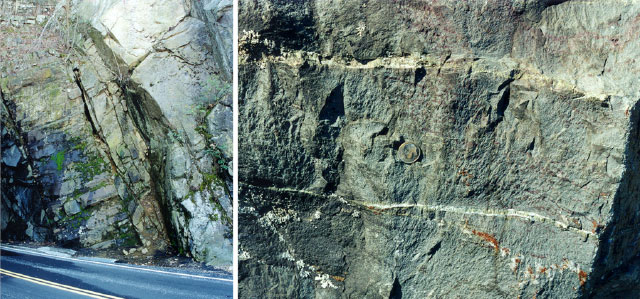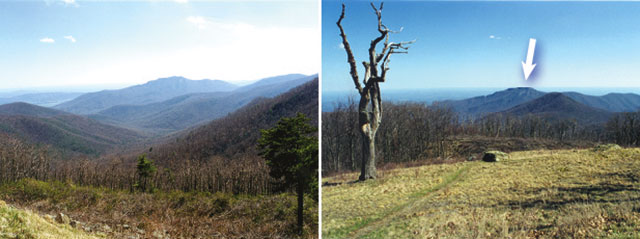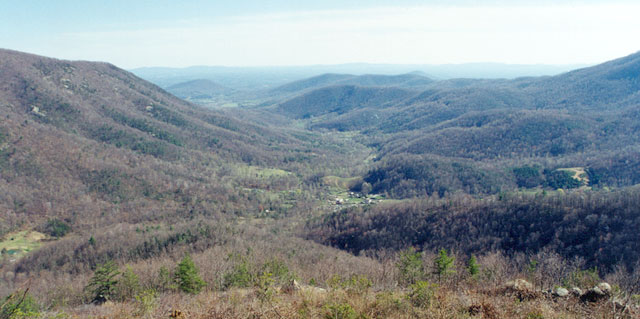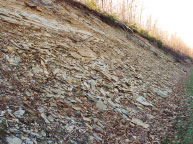
Blue Ridge Physiography: Special Features (Part 2)
Skyline Drive (Part 2)
Central Section

In the image on the left, a dike from the Catoctin Formation cuts through the Pedlar Formation at Mary’s Rock Tunnel. Because the Catoctin cuts the Pedlar, geologists know that the Pedlar must be older. As shown in the image on the right, the
Catoctin Formation is sometimes cut by veins of a lighter colored mineral called anthophyllite. (Photographs by Stan Johnson)

Left: Typical Blue Ridge mountain physiography can be seen from Pinnacles Overlook, shown here. Right: The Old Rag Granite, another common Blue Ridge rock, is visible at the top of Old Rag Mounain (arrow). (Photographs by Stan Johnson)
Back to Skyline Drive Location Map
Southern Section

 Typical Blue Ridge mountain physiography can also be seen from Bacon Hollow Overlook, shown here. In the southern part of the Skyline Drive, the Hampton Formation, a phyllite, is present, as shown in the right photograph. (Photographs by Stan Johnson)
Typical Blue Ridge mountain physiography can also be seen from Bacon Hollow Overlook, shown here. In the southern part of the Skyline Drive, the Hampton Formation, a phyllite, is present, as shown in the right photograph. (Photographs by Stan Johnson)
Back to Skyline Drive Location Map
Click to play video.